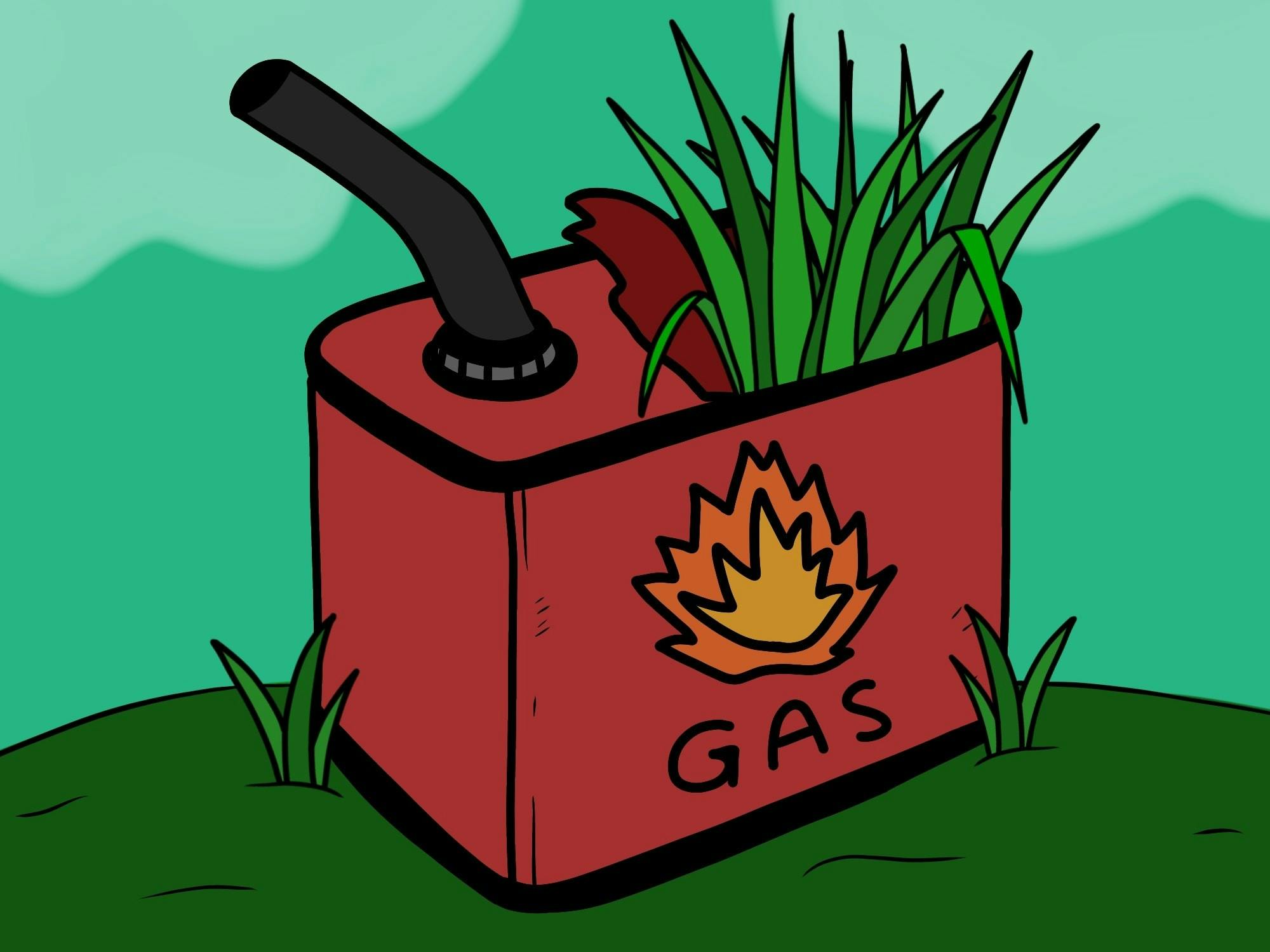MSU researchers have discovered a way to allow the switchgrass plant to reach its full potential as a biofuel crop, following a discovery of one of its growth limitations. The discovery could ease dependence on fossil fuels as a source of energy.
MSU Department of Energy research associate Mauricio Diego Tejera-Nieves and Department of Plant Biology professor Berkley Walker discovered that photosynthesis in these promising biofuel crops declines halfway through the season. This causes the plant to not grow in size.
“If you think of houseplants and what they need, they need water, they need light, they need nutrients and in summer, plants have this,” Tejera-Nieves said. “It’s sunny outside, it’s warm, leaves are green. However, photosynthesis goes down."
Tejera Nieves said this led him and Walker to investigate why the plant’s photosynthesis stops and what they can do to keep it growing so the plant can become larger and provide more energy and biofuels.
“If you think that photosynthesis is the source of energy for this plant, if we can lift this limitation and keep it high until the rest of the season until mid-fall, then the plant will grow bigger and we will get more energy and more ethanol and more biofuels,” Tejera-Nieves said.
Walker and Tejera-Nieves' first theory was that this stunt in growth was caused by water limitations. To test this, they put rainfall exclusion shelters in the middle of the field so plants could receive sunlight, but no water.
The lack of water played no part in how much the plant grew — after the experiment was conducted there was no striking difference between the plants under the rainfall exclusion and the plants that were outside of it.
Walker and Tejera-Nieves then decided to look inside the plant to see if there were any inner components contributing to the limitation.
A look inside allowed Tejera-Nieves to find that the perennial grasses they had been working with have roots that also serve as storage compartments for the plant.
“Imagine a tree right? The tree has no leaves but the trunk and branches are still alive and they’re breathing and respiring. So our perennial grasses have this structure but it's below ground,” Tejera-Nieves said.
Through some more investigating, Tejera-Nieves discovered that the storage compartment serves as a place for the plant to store starch. Throughout the summer as the compartment fills up, it correlates to when the rate of photosynthesis in the plant decreases.
“The plant is shutting down because it has nothing else to do with all the sugars, energy and building blocks that it is producing," Tejera-Nieves said. "So you have leaves that are producing sugars that you're using to grow or to store but once that storage compartment is full, what’s the point of keeping to produce if you’re not going to use it?”
Now are aware of this limitation, Tejera-Nieves and Walker are working to find a way to lift it so the plant can grow all season long.
“We want that plant to just keep growing during the season,” Walker said. Even if it doesn’t necessarily need the energy for itself. We want more leaves, we want more stuff above ground, because that’s what we make ethanol out of.”
With this knowledge, Walker said they now have an idea of how to find the plants that keep growing even when the storage compartment is full.
“A bigger plant will produce more biomass and then we can produce more ethanol with it but also a bigger plant will have bigger roots and that will sequester more carbon, will increase water quality and provide wildlife habitat,” Tejera-Nieves said.
Being able to grow larger plants that produce larger biomass make biofuels more worthwhile because they allow the system of fermenting into ethanol.
“For biofuels to work, you’d have to take something that doesn’t have a lot of energy in it, which is biomass. You need to get a whole bunch of that and then you need to drive it to some kind of fermentation plant where you make the ethanol,” Walker said. “To make that system work you have to be able to grow a whole lot of stuff really close to where the bioenergy processing plant is. Otherwise, it’s not worth the gas that you use to put on a truck and drive to the plant.”
Walker said increasing the yield of biomass produced from these plants makes the concept of biofuels more realistic. With this criteria in mind, Walker and Tejera-Nieves believe that switchgrass is the perfect candidate.
“It requires low inputs, you can grow it on land that maybe isn’t the best for other kinds of food crops and so by helping it be even better in these kinds of not-so-great areas for food crops, you also start setting up a system that makes more sense from a food production perspective," Berkley said.
Walker says this research is something unique to MSU.
“There’s a few places in the world that can do this kind of work that integrates between what’s going on in the field and what’s going on in the lab ... and can do (it) so seamlessly,” Walker said. “It’s been really a pleasure to work here and with the ecosystem of scientists that we have with different expertise.”






